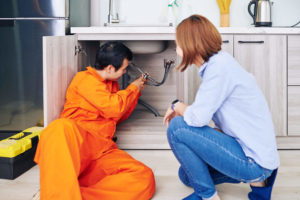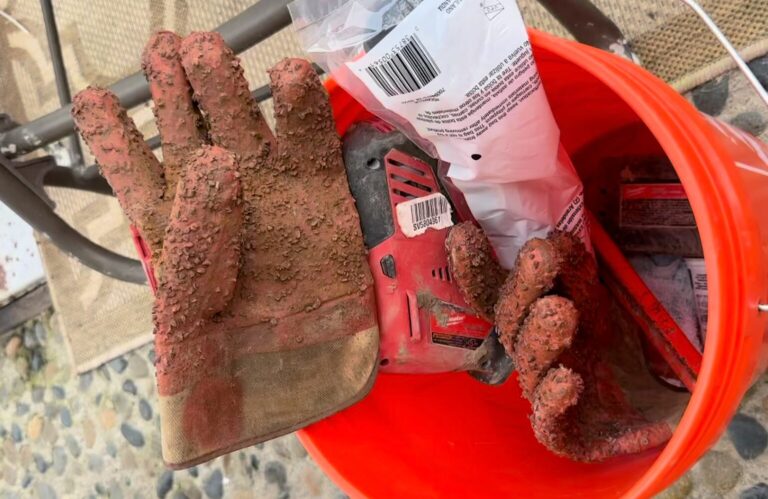A clogged toilet is one thing. But, dealing with a sewage backup in your house can be a lot more challenging!
When wastewater moves in the wrong direction through your drain, sink and toilet, the dirty water has to go somewhere.
Experiencing A Sewage Backup
Fortunately though, whether it’s caused by a clog or too much wastewater, there are a few steps you can take if this occurs.
When dealing with wastewater, you’ll want to contact an experienced plumber who will be able to manage the cleanup safely and effectively.

Find the Sewage Backup Blockage
The first step involved in sewage backup cleanup is finding the blockage. Be sure to check all your sinks, toilets and wastewater pipes to find it. And be sure no one in your household uses the sinks or toilets until you find it!
If you’re able to determine that you only have a blockage in one area, you may be able to do the cleanup yourself. However, you may need to contact a plumber if it’s a pipe problem.
Take Safety Seriously
Turning off the electricity is very important when you’re determining how to clean sewage backup. If your basement has flooded, don’t wade into the water until the power’s shut off!
However, if it’s unavoidable, wear rubber boots and gloves, safety glasses and a face mask. You won’t want to come into contact with anything that can conduct electricity.
Be sure to keep any children or pets away from the area while it’s backed up. And if you feel any discomfort with turning off the power, contact a qualified emergency plumbing professional instead.

Document the Damage
Making notes on the damage your home incurs will help when it comes to your sewage backup insurance claim.
Go through your home and take pictures of any effected items. Insurance will often cover something like a sewer backup; however, they often won’t cover flood damage.
Whatever the case, having evidence will make the claim process go more smoothly.
Once you have your ducks in a row, you can reach out to your insurance company to get the ball rolling.
Dry Out What’s Damaged
There may be very little that you can salvage if you’ve experienced a Category 3 water backup.
Items like cabinets, vinyl upholstery, hardwood, tile and linoleum can be saved if the sewage backup cleaning is done immediately. However, if the leak is left for more than a few hours, mold will have had time to develop. This means that there will be a lot less to salvage.
Unfortunately, anything that’s porous will need to be thrown out. This includes carpet, cardboard, books, mattresses, laminate flooring.
Conclusion
A sewage backup may not be the worst thing that can happen to you as a homeowner, but it is among the most unpleasant. Fortunately, there are steps you can take to salvage as much of your home as possible and prevent future problems.
Hopefully if you’ve experienced this type of calamity, it’s on the small scale. But, if it’s not, you can trust the professionals to take the task on for you!
If you’re in need of sewage backup restoration or expert sewer line repair, contact the Plumbing Squad team at (866) 324-9553 or reach us on our website.

